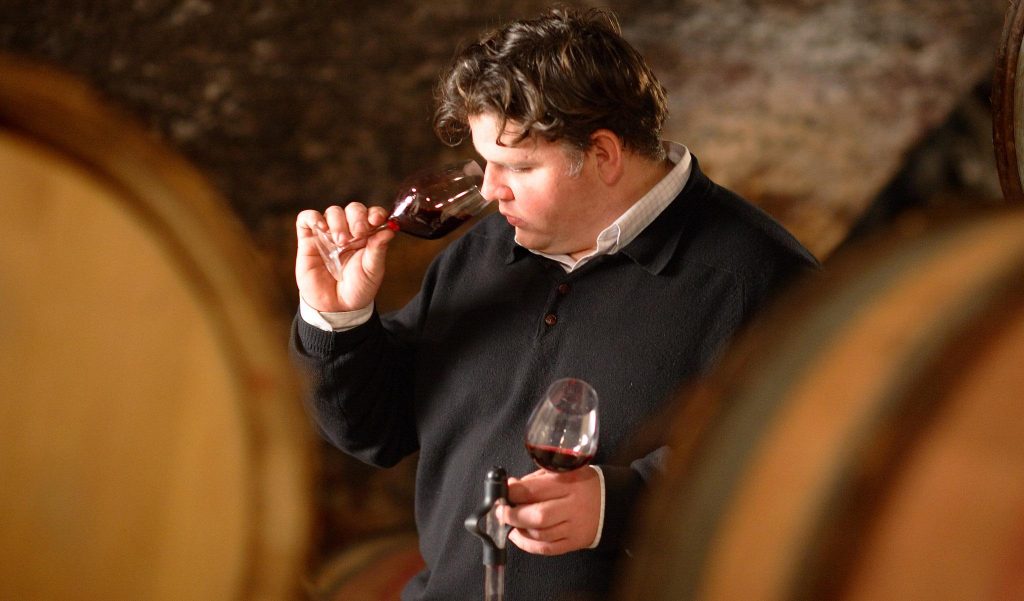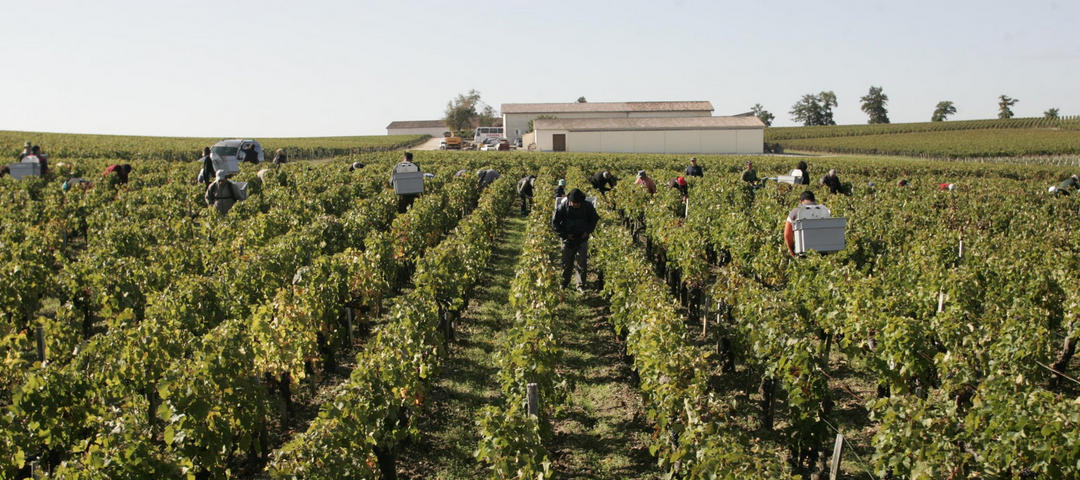Spotlight on sustainability: Domaine Thibault Liger-Belair
Author: Emily Miles

Thibault Liger-Belair is waiting for the moon to change. He needs it to bring new weather because enough rain is, well, enough. “It’s a waning moon, so we hope it brings the sun back next week,” he explains, holding up his biodynamic calendar (his “bible”).
Thibault has been farming organically since he took on his holdings in Burgundy two decades ago. “After three years, I began to try to understand how we had to work differently – for me, organic was a little bit too close to classic farming because it focuses on the plant,” he says. “For the last 30 or 40 years, winemakers have been thinking about the vine; my focus was instead to think about the soil and what it needs. For me, the soil is everything. I wanted to understand what the soil needs to give the plant what it needs.”

From the ground up
Rethinking his vineyard practices – from the soil up – means that Thibault is constantly experimenting and challenging the status quo. “We have stopped ploughing, to understand the effect of the plough,” he says. “By cutting the small surface roots, we encourage the roots right down into the reservoir. In the last three or four years, where we haven’t had much rain, it was very interesting to have the first roots intact. They could catch the first drops of rain so that the vine doesn’t suffer any hydric stress.”
And, as any gardener will know, work to remove weeds or grass from fertile soil is short-lived. “Nature doesn’t like to be naked,” Thibault shrugs. After ploughing, grass appears within a week or 10 days. “Maybe it’s not competing with the vine, I thought. So, I’ve created a carpet of grass; it protects the soil from the increasingly strong sun. We have to make observations and understand; maybe we don’t understand all the chemical reactions, animals and interactions but you see all the beneficial effects of each step you do.”
Now the grasses are allowed to grow amongst the vines, Thibault is experimenting with how to manage them. “We cut the grass at the beginning of July, because the grass gives very accessible nitrogen in the vineyard. This gives too much food to the vine – it’s like sugar for us – it causes the grapes to grow fast and the skin to be thinner and less protected from rot. They’re less phenolically ripe too. So, we don’t make it like an English garden. Instead, we break the straw with a specific roller so it’s not dead, but it stops growing.”
Integrated viticulture
Since 2005, Thibault has adopted many of the practices of biodynamics, but he’s not certified – nor does he want to be. “It’s a language, not a religion,” he says. “for me, it’s a long way from Rudolf Steiner – there are no gnomes or fairies in the soil. I think it is more integrated viticulture; to try to understand the fragile balance. Every day we understand a little bit more. Step by step, we change.” “We have to think in two timescales,” Thibault says. “We need to grow grapes for this harvest, but also to have balance in the soil in 10 years’ time. Our role is to conserve the soil, not to use it.” Moving the conversation forward is crucial, Thibault explains. “We have to share knowledge. When you farm like this, there are no truths. Different people use different plants, preparations, and so on, and we share the results. If you didn’t, you’d be lost – there are too many questions for us to answer alone.”
In the glass
So, is Thibault seeing a change in the wines he makes? “I see a real change in my grapes, in the colour and the quantity,” he says, “but the real change is that we now see more detail in each vintage. We get fewer extremes, but more interesting variations. The fruit represents the vintage; there is more reality between the quality of the fruit and the quality of the vintage. And there’s a better balance between alcohol and acidity.”
While it’s true that Thibault’s passion clearly lies in the ground beneath his feet – and the earth underneath his fingernails – his revolution doesn’t stop there. He has a geothermic system to regulate temperature; solar panels for energy; a Canadian well in the cellar to cool it; buildings made from recycled materials; a treatment plant that can recycle 95% of the water used in the winery.
“It always comes back to balance,” he says. “Like our water system – if you take it out, you have to give it back.”
Domaine Thibault Liger-Belair’s wines are a part of our Spotlight on sustainability offer



I agree that Steiner had a very particular way to express. But his words must be approached in a symbolic dimension. From there, everything becomes clearer and transposable into the everyday world.
Jean-Michel
Many thanks for your sharing your thoughts, Jean-Michel.